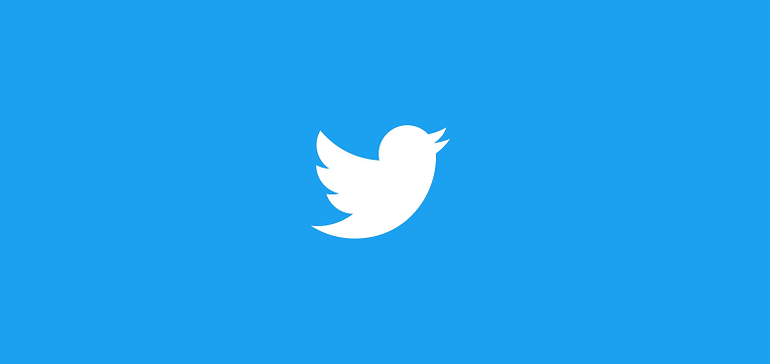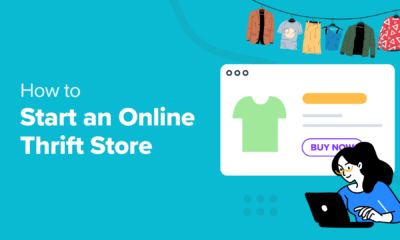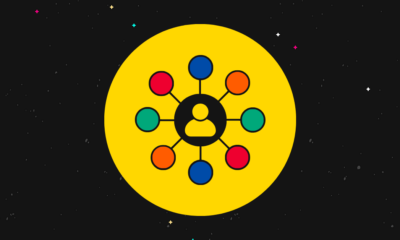SOCIAL
Twitter Will Start Displaying Tweet Reach Metrics Up-Front on Tweets

It’s been a relatively quiet few days in Elon town, as the new ‘Chief Twit’ re-assesses his next moves at the app, and considers how he can get more people more aligned to the platform, in order to build on growing interest.
Musk has repeatedly noted that Twitter usage has been at record highs since he took over at the platform, with more people seemingly tuning in to see what Elon might do next at the app. But now, it does appear that some of that momentum may be slowing, while questions are also being raised as to how much of a solution Elon’s $8 verification program will actually end up being, in terms of revenue intake.
On the first point, Elon is now apparently exploring why people don’t tweet, and how to better motivate participation from lurkers.
I meet so many people who read twitter every day, but almost never tweet.
If I may beg your indulgence, please add your voice to the public dialogue!
— Elon Musk (@elonmusk) December 1, 2022
That’s a significant concern – according to research conducted last year, around 25% of Twitter users in the US produce around 97% of all tweets.
Most Twitter users simply don’t tweet, which is a problem for Elon’s $8 verification strategy, because if most people aren’t actively engaging, why would they care about having a blue tick, or getting better reach for their replies, which is another perk of Elon’s verification plan?
Musk’s looking to address this, by potentially shifting the indirect incentives of tweet metrics:
Twitter will start showing view count for all tweets, just as view count is shown for all videos. The system is far more alive than it would seem.
— Elon Musk (@elonmusk) December 1, 2022
Musk says that people’s tweets are actually being seen, in general, by a lot more people than they think, and maybe, if Twitter can start highlighting this, in addition to Like and retweet counts, that could be a means to boost engagement.
But I don’t know.
Do you really want to know that a thousand people saw your tweet and not a single one of them felt compelled to engage with it in any way? I mean, sure, it’s interesting to know that people are actually seeing what you have to say, but if you’re not getting Likes, it could potentially be even more disengaging than not having that stat up front.
But Musk, of course, is an attention magnet, so maybe to him, it makes more sense that people would want to see this.
Will that improve tweet engagement? Probably not, but incentivizing participation is difficult, and there are no great answers for Twitter on this.
So he may as well try.
Which leads to the next Twitter note – in a new interview with Fast Company, a former Twitter staffer has said that most of Musk’s Twitter 2.0 plans won’t work, based on his knowledge of past market research they conducted at the app.
“All these ideas you’re seeing thrown out, of subscription models and verification and paying creators, we’ve already explored at least 75% of the ideas I’ve seen coming out from Elon and Jason Calcanis. We had extensive research on these topics. And a lot of people weren’t interested in them.”
Now, that doesn’t mean that they definitively won’t work, as sometimes people will say one thing and do another when the option is there.
But then again:
“[The former Twitter staffer] recalls that only around 10% of users surveyed said they were interested in Twitter Blue’s offering. They also tested different pricing levels, finding – unsurprisingly – that as the price went up, the interest rate went down. ‘It was pretty clear through this test that Twitter Blue wasn’t going to be a big moneymaker for us,’ the former employee says.”
That’s reflected in all of the stats for all of the various subscription offerings across the social media sphere – Twitter Blue peaked at 100k subscribers, or 0.04% of Twitter users, only 0.41% of Snapchat users pay for Snapchat+, a fraction of LinkedIn users pay for Premium.
Musk has thus far seemed convinced that everyone will simply pay, because they’ll want a blue tick. But increasingly, with every delayed roll-out of the updated verification plan, it does seem like there’s a level of realization setting in that this won’t be the savior he may have hoped.
But of course, his supporters will pay.
Every time you dare to question the genius of Elon Musk, you get a range of commentators cropping up to inform you that you’re wrong, that you don’t understand Elon’s vision, that you’ve never created a billion-dollar business, so how could you possibly have the gall to query the great man?
And they’re right. Musk has, one way or another, overseen huge success at some now massive companies, which are operating in difficult niches. And I suspect, one way or another, that Twitter too will eventually get onto a more profitable path – I can’t imagine somebody just sinking $44 billion to see the company collapse.
But at the same time, Musk himself has said that Twitter’s going to end up trying stupid things, as he goes about essentially learning what will and won’t work.
And with each of those experiments having impacts for users and advertisers, it is important to question such, and to highlight the potential challenges in take-up.
So a proviso – this isn’t about ‘free speech’ or political leanings. The observations of Elon’s Twitter reformation are based on his comments and actions at the app, and what they may mean for how it works, not ideology or opposing some perceived cultural perspective.
So miss me with that rubbish.
Even more important on this front, Twitter hasn’t changed its approach to moderation, so for all of Elon’s talk about free speech, he hasn’t actually done anything to better enable such as yet.
Sure, he may be letting banned users back on the app, which could stoke advertiser concerns, and Twitter has ended its COVID misinformation policy, which could be related to a more fundamental change in its approach. But just this week, in an appeal to ad partners, Twitter re-stated that its content rules have not changed.
Yes, Elon is keen to toot his free speech horn when it suits him, in a bid to muster more support. But even as a potential factor, he hasn’t changed anything on this front as yet, so it’s not functionally an element of critique around his actions.
Maybe it will be, but only from the perspective of how it impacts usage, and ad placement. Fundamentally, Elon can do whatever he likes, but he will need to abide by EU and App Store rules, so there will always be some restriction on what he can and cannot change on this front.
But as a political statement, it’s up to him and his team what rules they may want to implement. That will potentially come with a level of risk, but again, that’s their decision.
SOCIAL
Snapchat Explores New Messaging Retention Feature: A Game-Changer or Risky Move?

In a recent announcement, Snapchat revealed a groundbreaking update that challenges its traditional design ethos. The platform is experimenting with an option that allows users to defy the 24-hour auto-delete rule, a feature synonymous with Snapchat’s ephemeral messaging model.
The proposed change aims to introduce a “Never delete” option in messaging retention settings, aligning Snapchat more closely with conventional messaging apps. While this move may blur Snapchat’s distinctive selling point, Snap appears convinced of its necessity.
According to Snap, the decision stems from user feedback and a commitment to innovation based on user needs. The company aims to provide greater flexibility and control over conversations, catering to the preferences of its community.
Currently undergoing trials in select markets, the new feature empowers users to adjust retention settings on a conversation-by-conversation basis. Flexibility remains paramount, with participants able to modify settings within chats and receive in-chat notifications to ensure transparency.
Snapchat underscores that the default auto-delete feature will persist, reinforcing its design philosophy centered on ephemerality. However, with the app gaining traction as a primary messaging platform, the option offers users a means to preserve longer chat histories.
The update marks a pivotal moment for Snapchat, renowned for its disappearing message premise, especially popular among younger demographics. Retaining this focus has been pivotal to Snapchat’s identity, but the shift suggests a broader strategy aimed at diversifying its user base.
This strategy may appeal particularly to older demographics, potentially extending Snapchat’s relevance as users age. By emulating features of conventional messaging platforms, Snapchat seeks to enhance its appeal and broaden its reach.
Yet, the introduction of message retention poses questions about Snapchat’s uniqueness. While addressing user demands, the risk of diluting Snapchat’s distinctiveness looms large.
As Snapchat ventures into uncharted territory, the outcome of this experiment remains uncertain. Will message retention propel Snapchat to new heights, or will it compromise the platform’s uniqueness?
Only time will tell.
SOCIAL
Catering to specific audience boosts your business, says accountant turned coach

While it is tempting to try to appeal to a broad audience, the founder of alcohol-free coaching service Just the Tonic, Sandra Parker, believes the best thing you can do for your business is focus on your niche. Here’s how she did just that.
When running a business, reaching out to as many clients as possible can be tempting. But it also risks making your marketing “too generic,” warns Sandra Parker, the founder of Just The Tonic Coaching.
“From the very start of my business, I knew exactly who I could help and who I couldn’t,” Parker told My Biggest Lessons.
Parker struggled with alcohol dependence as a young professional. Today, her business targets high-achieving individuals who face challenges similar to those she had early in her career.
“I understand their frustrations, I understand their fears, and I understand their coping mechanisms and the stories they’re telling themselves,” Parker said. “Because of that, I’m able to market very effectively, to speak in a language that they understand, and am able to reach them.”Â
“I believe that it’s really important that you know exactly who your customer or your client is, and you target them, and you resist the temptation to make your marketing too generic to try and reach everyone,” she explained.
“If you speak specifically to your target clients, you will reach them, and I believe that’s the way that you’re going to be more successful.
Watch the video for more of Sandra Parker’s biggest lessons.
SOCIAL
Instagram Tests Live-Stream Games to Enhance Engagement

Instagram’s testing out some new options to help spice up your live-streams in the app, with some live broadcasters now able to select a game that they can play with viewers in-stream.
As you can see in these example screens, posted by Ahmed Ghanem, some creators now have the option to play either “This or That”, a question and answer prompt that you can share with your viewers, or “Trivia”, to generate more engagement within your IG live-streams.
That could be a simple way to spark more conversation and interaction, which could then lead into further engagement opportunities from your live audience.
Meta’s been exploring more ways to make live-streaming a bigger consideration for IG creators, with a view to live-streams potentially catching on with more users.
That includes the gradual expansion of its “Stars” live-stream donation program, giving more creators in more regions a means to accept donations from live-stream viewers, while back in December, Instagram also added some new options to make it easier to go live using third-party tools via desktop PCs.
Live streaming has been a major shift in China, where shopping live-streams, in particular, have led to massive opportunities for streaming platforms. They haven’t caught on in the same way in Western regions, but as TikTok and YouTube look to push live-stream adoption, there is still a chance that they will become a much bigger element in future.
Which is why IG is also trying to stay in touch, and add more ways for its creators to engage via streams. Live-stream games is another element within this, which could make this a better community-building, and potentially sales-driving option.
We’ve asked Instagram for more information on this test, and we’ll update this post if/when we hear back.
-

 SEO7 days ago
SEO7 days agoGoogle Limits News Links In California Over Proposed ‘Link Tax’ Law
-

 SEARCHENGINES6 days ago
SEARCHENGINES6 days agoGoogle Core Update Volatility, Helpful Content Update Gone, Dangerous Google Search Results & Google Ads Confusion
-
SEARCHENGINES7 days ago
Daily Search Forum Recap: April 12, 2024
-

 SEO6 days ago
SEO6 days ago10 Paid Search & PPC Planning Best Practices
-

 MARKETING6 days ago
MARKETING6 days ago2 Ways to Take Back the Power in Your Business: Part 2
-

 MARKETING4 days ago
MARKETING4 days ago5 Psychological Tactics to Write Better Emails
-

 SEARCHENGINES5 days ago
SEARCHENGINES5 days agoWeekend Google Core Ranking Volatility
-

 PPC6 days ago
PPC6 days agoCritical Display Error in Brand Safety Metrics On Twitter/X Corrected













You must be logged in to post a comment Login